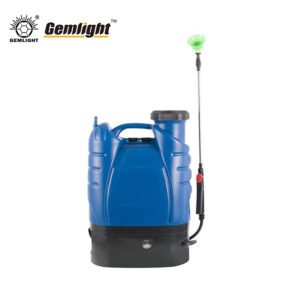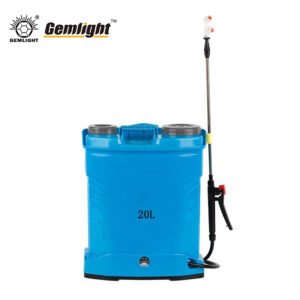Agriculture Tools and Their Uses: Complete Buyer’s Guide
When U are looking for agriculture tools and their uses, understanding the right tool for each task is essential. Moreover, using the proper tools improves efficiency, reduces labor, and enhances crop quality. In addition, knowing the uses of different agricultural tools helps buyers select durable, high-quality equipment for professional farming and land management.
Agriculture tools vary widely, from hand tools for precise work to heavy-duty tools for large-scale land preparation. However, selecting the wrong tool can increase labor, reduce productivity, and risk damage to crops or soil. This guide provides an overview of the most important agriculture tools and their uses, helping businesses and distributors make informed purchasing decisions.
1. Hoes and Their Uses
Hoes are among the most versatile agriculture tools, used for soil preparation, weeding, and small trench digging. For example, flat hoes are perfect for breaking up soil in garden beds, while pointed hoes can dig trenches for irrigation.
Moreover, using a high-quality hoe reduces manual effort and increases precision. Hoes with wooden or rubber handles improve grip and reduce fatigue, making them ideal for both small farms and commercial agricultural projects.
2. Sickles and Their Uses
Sickles are essential for harvesting cereals, grass, and sugarcane. However, selecting the right size and blade shape affects efficiency and safety. Curved blades are preferred for cutting crops close to the ground, while straight blades may be better for trimming or clearing vegetation.
In addition, ergonomic handles on sickles allow extended use without hand strain. Knowing the correct technique and application ensures that sickles remain effective and durable over time.
3. Shovels and Spades
Shovels and spades serve multiple purposes in agriculture. Shovels are primarily used for digging, moving soil, and loading materials. Spades, on the other hand, are ideal for precise soil cutting and edging.
Furthermore, choosing a durable steel blade and ergonomic handle ensures safety and long-term use. Consequently, understanding the specific uses of shovels and spades is crucial when considering agriculture tools and their uses for professional farms.
4. Rakes and Their Uses
Rakes are indispensable for soil leveling, clearing debris, and collecting leaves or crop residues. For example, steel garden rakes are perfect for heavy soil, while plastic or lightweight rakes work well for finer debris.
Moreover, using the right rake type enhances soil preparation and improves the overall quality of planting or seeding operations.
5. Machetes and Their Agricultural Uses
Machetes are versatile hand tools commonly used for cutting vegetation, clearing fields, and pruning plants. However, selecting the right type of machete—such as cane knives or parang—ensures efficiency and reduces fatigue during long work periods.
In addition, machetes are essential in sugarcane harvesting, brush clearing, and trail maintenance, making them a core component of agriculture tools and their uses.
6. Picks and Mattocks
Picks and mattocks are used for breaking hard soil, rocky terrain, and heavy digging. Moreover, a pick is ideal for loosening compacted soil, while a mattock combines a hoe and pick for versatile land preparation.
Consequently, professional farmers often keep these tools for challenging soil conditions, ensuring proper planting and irrigation setups.
7. Specialized Tools: Agriculture Efficiency
Other specialized tools include:
-
Weeders: Remove unwanted plants with minimal soil disruption.
-
Pruners and Shears: Trim branches, improve plant health, and enhance yield.
-
Forks and Rakes: Aerate soil, mix compost, and maintain garden beds.
In addition, combining specialized tools with standard hand tools increases productivity and ensures consistent farm management.
8. Choosing Agriculture Tools for Professional Use
When selecting agriculture tools and their uses, consider:
-
Task-specific selection: match the tool to soil type, crop, and terrain.
-
Material quality: high-carbon steel for strength, corrosion-resistant coatings for longevity.
-
Ergonomics: handles that reduce strain and prevent injury.
-
Maintenance: tools that are easy to clean and sharpen.
Therefore, understanding the uses of each tool ensures maximum efficiency and long-term value.
9. Maintenance Tips for Longevity
Even the best agriculture tools require care:
-
Clean after each use to prevent rust and contamination.
-
Sharpen blades regularly to maintain cutting efficiency.
-
Oil steel parts to reduce corrosion.
-
Inspect handles and joints for damage or looseness.
Moreover, proper storage and maintenance extend the life of tools, ensuring consistent performance in farming operations.
10. Summary: Agriculture Tools and Their Uses
In summary, knowing agriculture tools and their uses is critical for any farming operation. Key points include:
-
Hoes for soil preparation and weeding
-
Sickles for harvesting crops
-
Shovels and spades for digging and material handling
-
Rakes for soil leveling and debris removal
-
Machetes for clearing and pruning
-
Picks and mattocks for heavy-duty soil work
-
Specialized tools to enhance efficiency
Ultimately, selecting the right tools for each task improves productivity, reduces labor, and ensures high-quality crop management. Businesses and distributors should prioritize durable, ergonomic, and versatile tools to maximize their farming operations.




